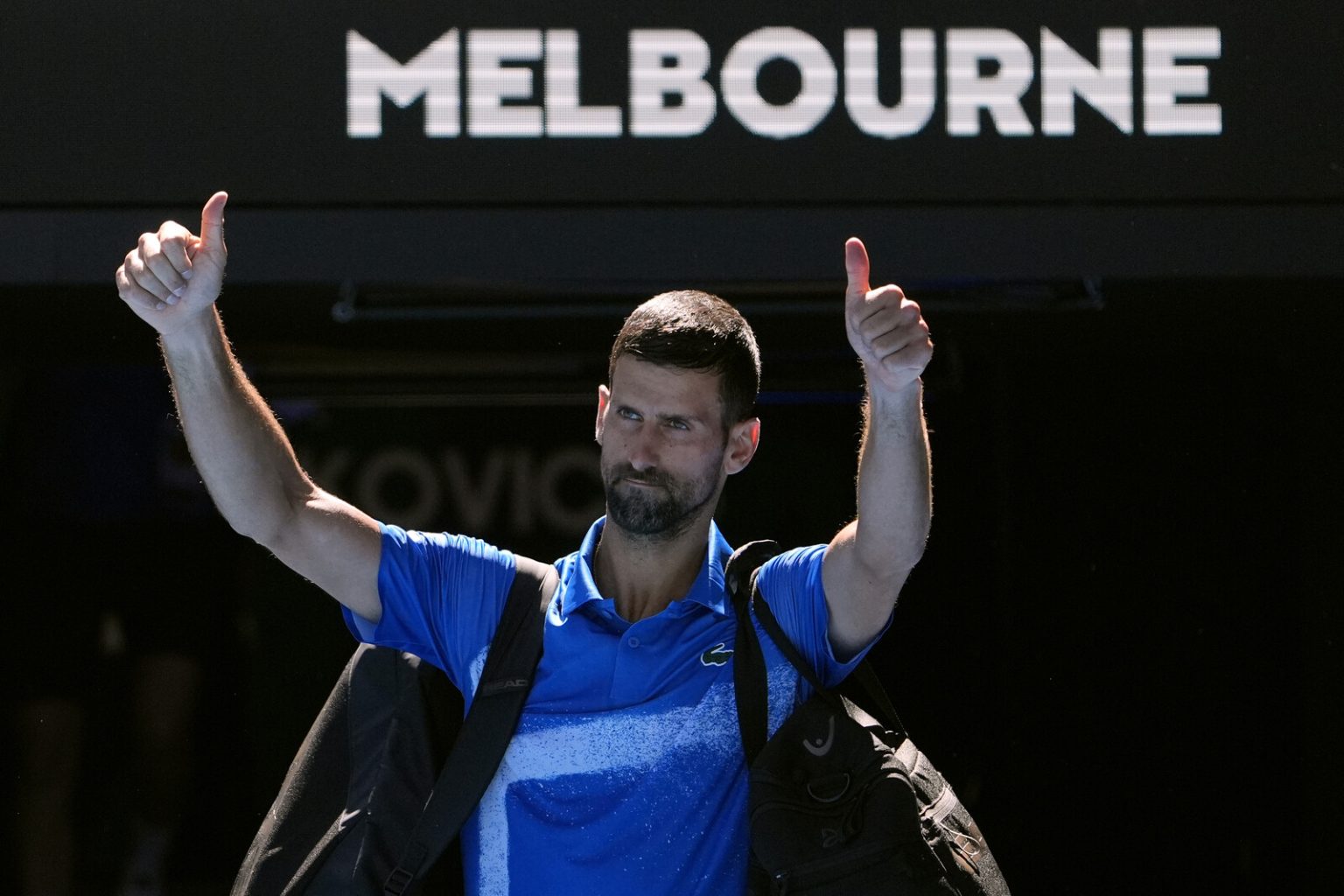Novak Djokovic’s abrupt departure from the Australian Open semi-final against Alexander Zverev has sparked controversy and debate, fueled further by the Serb’s subsequent social media response. Trailing 6-7 after a closely fought first set, Djokovic, visibly hampered by a heavily taped left thigh, opted to retire from the match, triggering a mixed reaction from the crowd at Rod Laver Arena. Some spectators expressed their disappointment with boos, while others offered applause and acknowledged the difficult decision the tennis star had to make. The injury, initially sustained during his quarter-final clash earlier in the week, had seemingly worsened, ultimately forcing Djokovic to concede the match and forfeit his chance to compete for a record-extending 11th Australian Open title.
The incident reignited discussions surrounding the legitimacy of Djokovic’s injury and his perceived tendency to withdraw from matches. Critics questioned the severity of the injury, pointing to his earlier performances in the tournament where he appeared to move relatively freely. Others defended Djokovic, emphasizing the unpredictable nature of muscle injuries and the immense pressure athletes face to compete at the highest level. The debate quickly spilled over onto social media, with fans and commentators divided on their interpretation of the events.
Djokovic himself addressed the swirling speculation the following day with a pointed post on X (formerly Twitter). Sharing an X-ray image of his injured left thigh, he directly challenged those questioning the validity of his ailment. His message, directed at ”all the ’experts’ on sports injuries,” conveyed his frustration with the public skepticism and seemed to suggest a degree of vindication against his detractors. The image, while not providing a definitive diagnosis, offered a visual representation of the injury, showcasing a distinct tear in the muscle tissue of his left thigh.
The controversy surrounding Djokovic’s withdrawal overshadowed what was otherwise a compelling Australian Open tournament. Zverev, having advanced to the final by virtue of Djokovic’s retirement, faced the arduous task of taking on the rising Italian star, Jannik Sinner, in the championship match. Sinner, known for his powerful groundstrokes and relentless energy, represented a formidable challenge for Zverev. The final promised a captivating clash between two of the sport’s most promising young players, but the lingering questions about Djokovic’s injury continued to dominate headlines.
The incident also highlighted the delicate balance between an athlete’s drive to compete and the imperative to prioritize their physical well-being. In a sport as demanding as professional tennis, players constantly push their bodies to the limit, often playing through pain and discomfort. However, the risk of exacerbating an existing injury can have long-term consequences, potentially derailing a player’s career. Djokovic’s decision, though met with criticism, ultimately reflected a pragmatic approach to managing his physical condition and safeguarding his future in the sport.
The Australian Open semi-final withdrawal will undoubtedly remain a talking point in the tennis world, adding another layer of complexity to the already storied career of Novak Djokovic. The Serb, a 24-time Grand Slam champion, is no stranger to controversy, and this episode is likely to further polarize opinions about him. While his supporters maintain his unwavering dedication and resilience, critics continue to question his sportsmanship and perceived susceptibility to injury. Regardless of personal opinions, the incident underscores the immense physical and mental demands placed on athletes competing at the pinnacle of their sport and the difficult choices they sometimes have to make.














